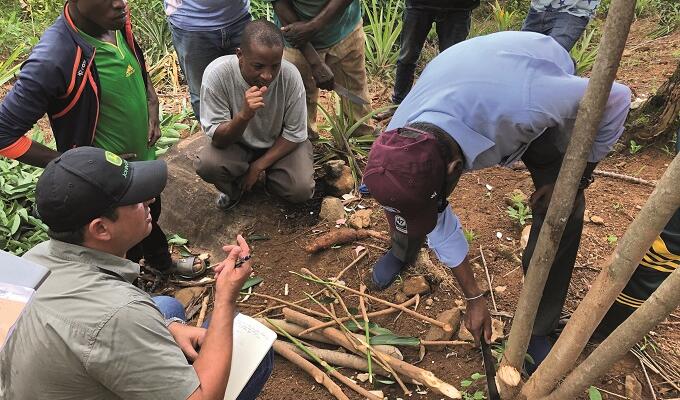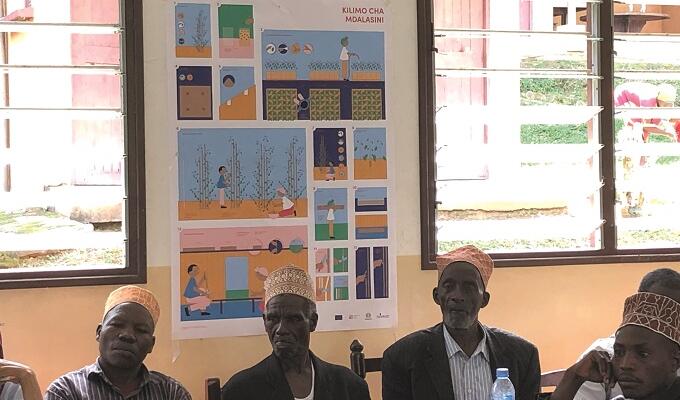

Taking farmers back to school
Come with us to Tanzania and see how cinnamon growers are benefitting from an engaging training programme
We trained 80 farmers over three days in the middle of the Tanzanian forests to help them become experts at adding value to cinnamon, one of the local treasures. We worked with a master trainer from Sri Lanka who was surprised by the fast progress farmers made in a short time. Sri Lankan producers, who have worked with cinnamon for 2,000 years, took only three months to perfect cinnamon quill-making for the farmers.
Tanzania is among the very few countries that produce top quality cinnamon (cinnamon zeylanicum). However, the country sits at the bottom of the cinnamon value chain because of a lack of knowledge and skill about the latest value addition techniques. We are trying to change that by bringing Sri Lankan expertise to Tanzanian farmers.
We aim to train more than 1,000 farmers over the next year so it was important to get the training model right. More often than not, farmers are trained using text heavy manuals that do not interest them. We tried to shake things up a bit. The result was highly engaged farmers who managed to replicate the difficult art of cinnamon quill-making in a very short time. Testament to that was provided when a group of farmers came up to the organizers offering to pay a fee to attend the training.
Following are a few reasons why I believe the training was successful.
Telling stories, not giving instructions: To begin with, our instruction medium was a series of illustrations, like a comic book, which showed an African man and a woman producing and processing cinnamon. Through 13 illustrations we managed to map the journey of cinnamon processing. We made this more palatable for farmers by showing them a video of Sri Lankan farmers going through the same process and achieving great results.
Making farmers do instead of see and listen: The farmers were hardly subjected to long lectures. They spent most of the time replicating all the processes in the field. From making nursery bags to cutting and scraping cinnamon trees, the farmers experienced the whole process. Their interest was further enhanced by providing them with new tools to make their job easier.
Inspiring competition: We split the farmers into groups and announced a prize for the one that made the best quill. The competition was divided in three rounds and scores of each round were announced. This was truly a game-changer. These farmers had never experienced group formation of this kind, let alone competing. The result was healthy competition among the farmers to deliver top-quality products.
Bringing the incentives closer: Another key aspect is organization of these trainings in collaboration with buyers of the products. Therefore, it was not about showing farmers a distant dream of lucrative markets. Instead, we brought the market to their doorstep, which reminded them they would be paid more if they produced their product at a higher quality.
Not leaving the farmers hanging: It was important to explain to the farmers that this intervention does not end here. For this reason, we organized these training with local partners. We are moving forward with this approach to reach new markets in a way that assures farmers of constant support and guarantee of sustainable plans.
These farmers were trained under the International Trade Centre (ITC) MARKUP project with financial support from the European Union to help support the development of the spices value chain in Tanzania.
We will work on cinnamon upgradation until 2022. By then we hope that Tanzania would be a force to reckon within the world cinnamon market.



